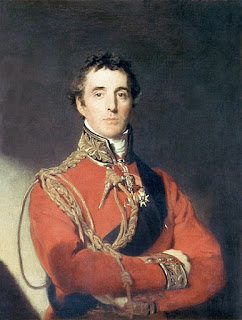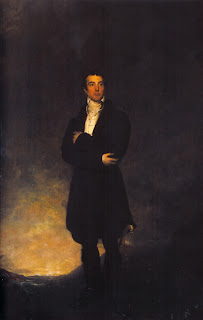Here we are together on another London stroll. This time, we’ll be taking in the views as we approach Apsley House whilst walking north on Grosvenor Place.
Our first glimpses of Apley House through the trees.
The Wellington Arch! And many double decker buses.
We’re getting closer.
The gate at Hyde Park Corner, Apsley House and a rare break in the traffic.
The Wellington Statue!
Stepping inside the gates, the toll keeper’s cottage.
View from inside gates to the side of Apsley House. Wouldn’t we look marvelous standing on that balcony with a cocktail in our hand?
The Wellington Arch!
Walking round to the front of Apsley House.
The front of Apsley House.
Whoops! Almost forgot to point out the sign.
The steps leading up to the front door. Note the black dots going up each side of the steps. A carpet rail would be slid into these iron rings to hold a stair carpet in place during important events. Personally, I think our visit is an important event in itself, but I suppose since we’re on first name terms with Artie our visit is considered informal.
I feel that this painting captures the essence of the Duke as a man, rather than as a great soldier or statesman. He stands alone, in civilian dress and with no emblem of military might, in the semi-darkness ready to defend against whatever comes his way. At the same time, there is something in the way he protectively holds his arms to his chest that evokes an air of vulnerability, a trait not typically attributed to the Duke of Wellington.
Now we’ll move on to the Waterloo Chamber, below.
Above is the statue of Napoleon by Canova that was taken as a spoil of war and presented to the Duke of Wellington by George IV. I don’t suppose re-gifting was an option then . . . . . .
Above is only a tiny portion of the gold plate presented to the Duke by grateful nations and now on display at Apsley House. Below is the Portuguese Centrepiece, one of the most important examples of Neo-Classical silver ever made, which was always used during the Duke’s annual Waterloo Dinners.









Apsley House is one of my favorites. I love the Waterloo Chamber and so many of the pieces of art. That great dining hall and the idea of the Waterloo dinners left an impression on me too.
And if I recall, I have a very funny, very childish pic of Diane Gaston with that Canova!
Sigh!!!! Thanks so much for the walk down memory lane, Kristine! Why am I not surprised that you set off the alarm? You, of all people, should be allowed to touch anything Wellington. Even the Canova statue.
What a lovely stroll and a lovely tour! I have never been to Apsley House (except via your blog!)but one day I WILL visit Artie's place!
Eeeeewww!I don't WANT to touch the Canova statue!
I just wish the Canova statue hadn't made me think, "Hm, what would it be like to have a nude statue of one of MY vanquished enemies at the base of my stairs?" Because, doubtless thanks to Canova's artistic license, Nekkid Napoleon is easier on the eyes than any of my array of Evil Bosses and Mean Girls from High School would be.
Everytime I see that Canova, I wonder if Wellington would have wanted a sculpture of the *real* Napoleon?
Bravo to you for pointing out the dust on that silver – and making them care for it properly since.
thank you for an enjoyable walk. I'm a Napoleon fan but I never saw him like that before…
I'm so glad you all enjoyed our stroll! And Apsley House. And the naked Napoleon statue. Poor Wellington . . . .
The nude statue of Napoleon always struck me as so out of place in that house! (Better a nude statue of the Duke, don't you think?)